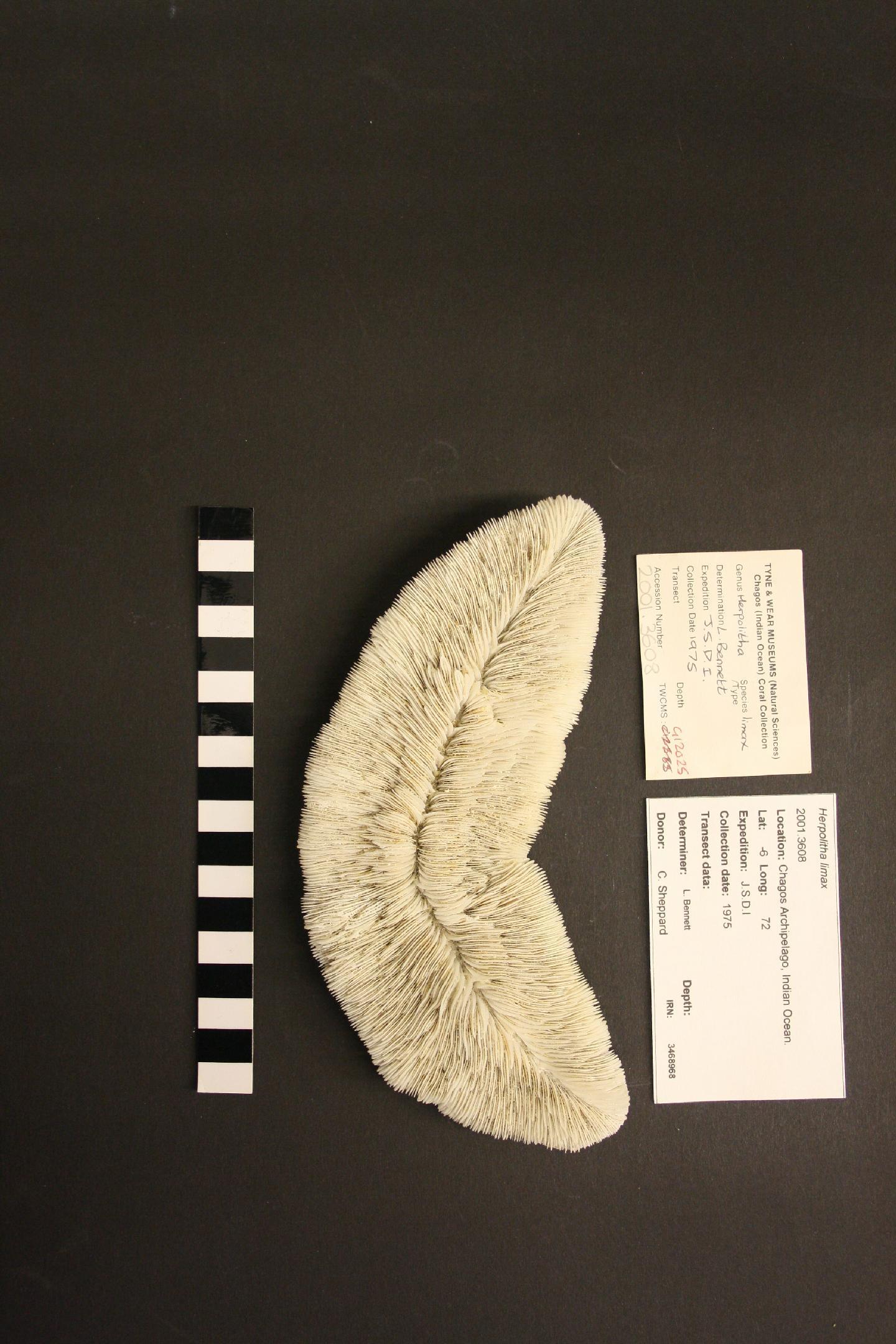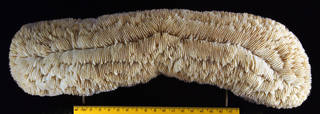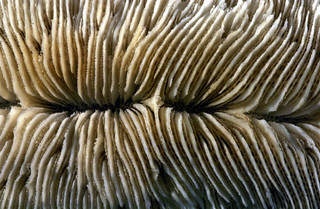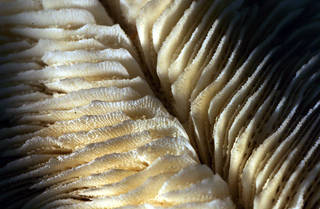
Chinese
Register of
Marine Species
(ChaRMS)
Register of
Marine Species
(ChaRMS)
| Intro | | Search taxa | | Taxon tree | | Sources | | Statistics | | Editors | | Log in |
WoRMS taxon detailsHerpolitha limax (Esper, 1792)
207363 (urn:lsid:marinespecies.org:taxname:207363)
accepted
Species
Fungia limacina Lamarck, 1801 · unaccepted > junior subjective synonym
Fungia limax (Esper, 1792) · unaccepted > superseded combination
Fungia praecursor Umbgrove, 1946 † · unaccepted > junior subjective synonym
Fungia weberi Van der Horst, 1921 · unaccepted > junior subjective synonym
Haliglossa foliosa Ehrenberg, 1834 · unaccepted > junior subjective synonym
Haliglossa interrupta Ehrenberg, 1834 · unaccepted > junior subjective synonym
Haliglossa interrupta var. subpileata Ehrenberg, 1834 · unaccepted > junior subjective synonym
Haliglossa limacina (Lamarck, 1801) · unaccepted > junior subjective synonym
Haliglossa stellaris Ehrenberg, 1834 · unaccepted > junior subjective synonym
Herpetoglossa secunda Nemenzo, 1988 · unaccepted > junior subjective synonym
Herpetolitha ampla Verrill, 1864 · unaccepted > junior subjective synonym
Herpetolitha crassa (Dana, 1846) · unaccepted > junior subjective synonym
Herpetolitha crassus (Dana, 1846) · unaccepted > junior subjective synonym
Herpetolitha foliosa (Ehrenberg, 1834) · unaccepted > junior subjective synonym
Herpetolitha interrupta (Ehrenberg, 1834) · unaccepted > junior subjective synonym
Herpetolitha limax (Esper, 1792) · unaccepted > superseded combination
Herpetolitha stellaris (Ehrenberg, 1834) · unaccepted > junior subjective synonym
Herpetolitha stricta (Dana, 1846) · unaccepted > junior subjective synonym
Herpetolithas foliosa (Ehrenberg, 1834) · unaccepted > junior subjective synonym
Herpetolithas interrupta (Ehrenberg, 1834) · unaccepted > junior subjective synonym
Herpetolithas limacina (Lamarck, 1801) · unaccepted > junior subjective synonym
Herpetolithas stellaris (Ehrenberg, 1834) · unaccepted > junior subjective synonym
Herpetolithus crassus Dana, 1846 · unaccepted > junior subjective synonym
Herpetolithus foliosus (Ehrenberg, 1834) · unaccepted > junior subjective synonym
Herpetolithus interruptus (Ehrenberg, 1834) · unaccepted > junior subjective synonym
Herpetolithus limacinus (Lamarck, 1801) · unaccepted > junior subjective synonym
Herpetolithus stellaris (Ehrenberg, 1834) · unaccepted > junior subjective synonym
Herpetolithus strictus Dana, 1846 · unaccepted > junior subjective synonym
Herpolitha foliosa (Ehrenberg, 1834) · unaccepted > junior subjective synonym
Herpolitha stricta (Dana, 1846) · unaccepted > junior subjective synonym
Herpolitha weberi (van der Horst, 1921) · unaccepted > junior subjective synonym
Madrepora limax Esper, 1792 · unaccepted > superseded combination (basionym)
Madrepora pileus var. trilinguis Boddaert, 1768 · unaccepted > unavailable name (suppressed)
Madrepora talpa Houttuyn, 1772 · unaccepted > unavailable name (suppressed)
Madrepora trilinguis Boddaert, 1768 · unaccepted > unavailable name (suppressed)
Matrepora limax (Esper, 1792) · unaccepted > superseded combination
Matrepora talpa (Houttuyn, 1772) · unaccepted > unavailable name
Sandalolitha africana Veron, 2000 · unaccepted > junior subjective synonym
marine,
(of Madrepora limax Esper, 1792) Esper, E.J.C. (1788-1830). Die Pflanzenthiere in Abbildungen nach der Natur mit Farben erleuchtet nebst Beschreibungen. Raspischen Buchhandlung, Nuremberg. 3 vols text, 2 vols pls. , available online at https://doi.org/10.11588/diglit.2885 [details]
Description This coral is free living and strongly elongate. It is colonial, with numerous centres down a central furrow as well as...
Description This coral is free living and strongly elongate. It is colonial, with numerous centres down a central furrow as well as secondary centres down the sides of the corallum. The species reaches 45 cm long and about 10-15 cm wide. Septa very finely toothed. They are arched, and run from the central furrow to a secondary centre. The species is abundant and widespread in the Red Sea. It occurs in mid-depths, on coral rubble and hard substrates (Sheppard, 1998). Colonies are elongate with rounded ends. Secondary centres are numerous. Few primary septa extend from the axial furrow to the perimeter. Some colonies develop forked axial furrows and become Y-,T-, or X-shaped. Colour: pale or dark brown or greenish-brown. Abundance: common on partly protected reef slopes where Fungia occur (Veron, 1986). The largest of the fungiids, up to over 1 m in length (commonly 30-50 cm). Colonial, not solitary. Colonies are elongated, irregularly shaped with rounded ends. Colour: usually dark brown. Habitat: sheltered reefs (Richmond, 1997); sand (Kalk, 1959). [details]
Hoeksema, B. W.; Cairns, S. (2024). World List of Scleractinia. Herpolitha limax (Esper, 1792). Accessed through: World Register of Marine Species at: https://www.marinespecies.org/aphia.php?p=taxdetails&id=207363 on 2024-09-21
Date action by 2000-09-28 07:24:50Z changed Garcia, Maria
original description
(of Sandalolitha africana Veron, 2000) Veron JEN. (2000). Corals of the World. Vol. 1–3. <em>Australian Institute of Marine Science and CRR, Queensland, Australia.</em> [details]
original description (of Madrepora limax Esper, 1792) Esper, E.J.C. (1788-1830). Die Pflanzenthiere in Abbildungen nach der Natur mit Farben erleuchtet nebst Beschreibungen. Raspischen Buchhandlung, Nuremberg. 3 vols text, 2 vols pls. , available online at https://doi.org/10.11588/diglit.2885 [details] original description (of Fungia limacina Lamarck, 1801) Lamarck, J. B. (1801). Système des animaux sans vertèbres, ou tableau général des classes, des ordres et des genres de ces animaux; Présentant leurs caractères essentiels et leur distribution, d'apres la considération de leurs rapports naturels et de leur organisation, et suivant l'arrangement établi dans les galeries du Muséum d'Histoire Naturelle, parmi leurs dépouilles conservées; Précédé du discours d'ouverture du Cours de Zoologie, donné dans le Muséum National d'Histoire Naturelle l'an 8 de la République. Published by the author and Deterville, Paris: viii + 432 pp., available online at http://biodiversitylibrary.org/page/14117719 [details] original description (of Fungia weberi Van der Horst, 1921) van der Horst, C.J. (1921). The Madreporaria of the Siboga expedition: 2. Madreporaria Fungida. Siboga-Expeditie: uitkomsten op zoölogisch, botanisch, oceanographisch en geologisch gebied verzameld in Nederlandsch Oost-Indië 1899-1900 aan boord H.M. Siboga onder commando van Luitenant ter Zee 1e kl. G.F. Tydeman, XVIb. E.J. Brill: Leiden. 53-98, plates I-VI pp. (look up in IMIS) [details] original description (of Madrepora trilinguis Boddaert, 1768) Boddaert, P. 1768. Lyst der Plant-Dieren, p. (1-50) + 1-654, pls. 1-14. Van Paddenburg & Van Schoonhoven, Utrecht. [details] original description (of Madrepora talpa Houttuyn, 1772) Houttuyn, M. (1772). Natuurlyke historie of uitvoerige beschryving der dieren, planten en mineralen, volgens het samenstel van den heer Linnaeus met naauwkeurige afbeelingen. <em>F. Houttuyn, Amsterdam.</em> 1 (17) 1-6, 1-614. [details] original description (of Haliglossa interrupta Ehrenberg, 1834) Ehrenberg, C. G. (1834). Beiträge zur physiologischen Kenntniss der Corallenthiere im allgemeinen, und besonders des rothen Meeres, nebst einem Versuche zur physiologischen Systematik derselben. <em>Abhandlungen der Königlichen Akademie der Wissenschaften, Berlin.</em> 1: 225-380., available online at https://www.biodiversitylibrary.org/page/29725862 [details] original description (of Haliglossa foliosa Ehrenberg, 1834) Ehrenberg, C. G. (1834). Beiträge zur physiologischen Kenntniss der Corallenthiere im allgemeinen, und besonders des rothen Meeres, nebst einem Versuche zur physiologischen Systematik derselben. <em>Abhandlungen der Königlichen Akademie der Wissenschaften, Berlin.</em> 1: 225-380., available online at https://www.biodiversitylibrary.org/page/29725862 [details] original description (of Haliglossa stellaris Ehrenberg, 1834) Ehrenberg, C. G. (1834). Beiträge zur physiologischen Kenntniss der Corallenthiere im allgemeinen, und besonders des rothen Meeres, nebst einem Versuche zur physiologischen Systematik derselben. <em>Abhandlungen der Königlichen Akademie der Wissenschaften, Berlin.</em> 1: 225-380., available online at https://www.biodiversitylibrary.org/page/29725862 [details] original description (of Herpetolithus strictus Dana, 1846) Dana, J.D. (1846-1849). Zoophytes. United States Exploring Expedition during the years 1838-1842. <em>Lea and Blanchard, Philadelphia.</em> 7: 1-740, 61 pls. (1846: 1-120, 709-720; 1848: 121-708, 721-740; 1849: atlas pls. 1-61)., available online at http://www.sil.si.edu/digitalcollections/usexex/navigation/ScientificText/USExEx19_08select.cfm [details] original description (of Herpetolithus crassus Dana, 1846) Dana, J.D. (1846-1849). Zoophytes. United States Exploring Expedition during the years 1838-1842. <em>Lea and Blanchard, Philadelphia.</em> 7: 1-740, 61 pls. (1846: 1-120, 709-720; 1848: 121-708, 721-740; 1849: atlas pls. 1-61)., available online at http://www.sil.si.edu/digitalcollections/usexex/navigation/ScientificText/USExEx19_08select.cfm [details] original description (of Herpetolitha ampla Verrill, 1864) Verrill, A. E. (1864). List of the polyps and corals sent by the Museum of Comparative Zoology to other institutions in exchange, with annotations. <em>Bulletin of the Museum of Comparative Zoology.</em> 1: 29-60., available online at https://www.biodiversitylibrary.org/page/6587563 [details] original description (of Fungia praecursor Umbgrove, 1946 †) Umbgrove JHF. (1946). Corals from a Lower Pliocene patch reef in Central Java. <em>Journal of Paleontology.</em> 20: 521-542. [details] original description (of Herpetoglossa secunda Nemenzo, 1988) Nemenzo F. (1988). Philippine stony corals V. Three new species from islets in Central Philippines. <em>The Philippine Journal of Science.</em> 117: 215-221. [details] original description (of Haliglossa interrupta var. subpileata Ehrenberg, 1834) Ehrenberg, C. G. (1834). Beiträge zur physiologischen Kenntniss der Corallenthiere im allgemeinen, und besonders des rothen Meeres, nebst einem Versuche zur physiologischen Systematik derselben. <em>Abhandlungen der Königlichen Akademie der Wissenschaften, Berlin.</em> 1: 225-380., available online at https://www.biodiversitylibrary.org/page/29725862 [details] context source (Hexacorallia) Fautin, Daphne G. (2013). Hexacorallians of the World. (look up in IMIS) [details] basis of record Hoeksema BW. (1989). Taxonomy, phylogeny and biogeography of mushroom corals (Scleractinia: Fungiidae. <em>Zoologische Verhandelingen, Leiden.</em> 254: 1-295., available online at http://www.repository.naturalis.nl/document/149013 [details] additional source Gittenberger A, Reijnen BT, Hoeksema BW. (2011). A molecularly based phylogeny reconstruction of mushroom corals (Scleractinia: Fungiidae) with taxonomic consequences and evolutionary implications for life history traits. <em>Contributions to Zoology.</em> 80: 107-132., available online at https://brill.com/downloadpdf/journals/ctoz/80/2/article-p107_2.xml [details] additional source Benzoni, F., Stefani, F., Stolarski, J., Pichon, M., Mitta, G., Galli, P. 2007. Debating phylogenetic relationships of the scleractinian Psammocora: molecular and morphological evidences. Contributions to Zoology 76: 35-54., available online at http://dpc.uba.uva.nl/cgi/t/text/get-pdf?c=ctz;idno=7601a04 page(s): 35, 37, 38, 39, 45, 46, fig. 6 [details] additional source Hoeksema, B.W., 1993. Mushroom corals (Scleractinia: Fungiidae) of Madang Lagoon, northern Papua New Guinea: an annotated checklist with the description of Cantharellus jebbi spec. nov. Zoologische Mededelingen, Leiden 67: 1-19., available online at http://www.repository.naturalis.nl/document/150656 page(s): 9, 16 [details] additional source Nemenzo, F. (1955). Systematic studies on Philippine shallow water scleractinians: I. Suborder Fungiida. <em>Natural and Applied Science Bulletin, University of the Philippines.</em> 15: 3-84. page(s): 6, 74-76, Plate XIV, fig. 3 [details] additional source van der Horst, C.J. (1921). The Madreporaria of the Siboga expedition: 2. Madreporaria Fungida. Siboga-Expeditie: uitkomsten op zoölogisch, botanisch, oceanographisch en geologisch gebied verzameld in Nederlandsch Oost-Indië 1899-1900 aan boord H.M. Siboga onder commando van Luitenant ter Zee 1e kl. G.F. Tydeman, XVIb. E.J. Brill: Leiden. 53-98, plates I-VI pp. (look up in IMIS) page(s): 3, 15-16, 44, 45 [details] additional source Veron JEN. (2000). Corals of the World. Vol. 1–3. <em>Australian Institute of Marine Science and CRR, Queensland, Australia.</em> [details] additional source Hoeksema, B.W. & Dai,C.F. 1991. Scleractinia of Taiwan. II Family Fungiidae (with the description of a new species). Bulletin Zoological Institute, Academia Sinica, Taipei 30: 201-226. page(s): 206, 222, 223, Fig. 78, 224 [details] additional source Yabe H, Sugiyama T. (1941). Recent reef-building corals from Japan and the South Sea Islands under the Japanese mandate. II. <em>The Science reports of the Tôhoku, Imperial University, Sendai, 2nd Series (Geologie).</em> Special Volume 2: 67-91, pls. 60-104. page(s): 80 [details] additional source Scheer G, Pillai CSG. (1974). Report on Scleractinia from the Nicobar Islands. <em>Zoologica, Stuttgart.</em> 42(122): 1-75. page(s): 8, 39, 74 [details] additional source Umbgrove JHF. (1939). Madreporaria from the Bay of Batavia. <em>Zoologische Mededelingen, Leiden.</em> 22: 1-64. page(s): 14, 18, 45 [details] additional source Pillai CSG, Scheer G (1976) Report on the stony corals from the Maldive Archipelago. Results of the Xarifa Expedition 1957/58. Zoologica, Stuttgart 43 (126): 1-83, pls. 1-32. [details] additional source Crossland C (1952) Madreporaria, Hydrocorallinae, Heliopora and Tubipora. Scientific Report Great Barrier Reef Expedition 1928-29 VI(3): 85-257. page(s): 92 [details] additional source Pichon, M.; Benzoni, F. (2007). Taxonomic re-appraisal of zooxanthellate Scleractinian Corals in the Maldive Archipelago. <em>Zootaxa.</em> 1441: 21–33. page(s): 30 [details] additional source Faustino LA. (1927). Recent Madreporaria of the Philippine Islands. <em>Bureau of Science Manila Monograph.</em> 22: 1-310, pls. 1-100. page(s): 16, 40, 195-196 [details] additional source Veron JEN, Marsh LM. (1988). Hermatypic corals of Western Australia : records and annotated species list. <em>Records Western Australian Museum Supplement.</em> 29: 1-136., available online at https://doi.org/10.5962/bhl.title.60555 page(s): 30, 85 [details] additional source Pillai CSG. (1972). Stony corals of the seas around India. <em>Proceedings of the First International Symposium on Corals and Coral Reefs, 1969. Marine Biological Association of India Symposium.</em> 5: 191-216. page(s): 203 [details] additional source Boshoff, P.H. (1981). An annotated checklist of Southern Africa Scleractinia. <em>Oceanographic Research Institute Investigational Report, Durban.</em> 49: 1-45. page(s): 22 [details] additional source Randall RH, Myers RF. (1983). The corals. Guide to the Coastal Resources of Guam: Vol. 2. <em>University of Guam Press, Guam, pp. 128.</em> [details] additional source Veron, J. E. N. (2000). Corals of the World, Volume II: Families Astrocoeniidae, Pocilloporidae, Euphyllidae, Oculinidae, Meandrinidae, Siderastreidae, Agariciidae, Fungiidae, Rhizangiidae, Pectiniidae, Merulinidae, Dendrophylliidae, Caryophylliidae. Australian Institute of Marine Science. Townsville., volume 2, pp. 429. page(s): 292-293 [details] additional source Maragos, J. E.; Molina, M.; Kenyon, J. (2004). Palmyra Atoll coral data compiled from Townsend Cromwell 2000-2002, U.S. Fish and Wildlife Service 2000-2001, and Sette 2004 surveys [Table 8]. UNPUBLISHED, UNPUBLISHED [details] additional source Maragos, J. E.; Schmerfeld, J. (2004). Coral survey from Howland Island National Wildlife Refuge, 1998-2004 [Table 3]. UNPUBLISHED, Unpublished page(s): 1 [details] additional source Maragos, J. E. (2004). Baker Island coral data [Table unnumbered]. UNPUBLISHED, Unpublished page(s): 2 [details] additional source Wells JW. (1954). Recent corals of the Marshall Islands: Bikini and nearby atolls, part 2, oceanography (biologic). <em>U.S. Geological Survey Professional Paper.</em> 260(I): 385-486. page(s): 393, 449, pl. 162 [details] additional source Pillai CSG. (1983). Structure and generic diversity of recent Scleractinia of India. <em>Journal of the Marine Biological Association of India.</em> 25, 1-2, 78-90. page(s): 86 [details] additional source Veron, J. E. N.; Pichon, M. (1979). Scleractinia of Eastern Australia, part III: Families Agariciidae, Siderastreidae, Fungiidae, Oculinidae, Merulinidae, Mussidae, Pectiniidae, Caryophylliidae, Dendrophylliidae. Australian Government Publishing Service. Canberra., volume 4, pp. 422. page(s): 6, 176, 178-180, 182 [details] additional source Boschma, H. (1929). The Fungidæ (Anthozoa) collected by Mr. Cyril Crossland at Tahiti and neighbouring islands. Proceedings of the Zoological Society of London, 43-47 page(s): 46 [details] additional source Sheppard, C. R. C. (1985). Fringing reefs in the southern region, Jeddah to Jizan. Fauna of Saudi Arabia, 7, 37-58 page(s): 46 [details] additional source Jeyabaskaran, R. (2009). New records of corals from Lakshadweep islands. Records of the Zoological Survey of India, 109, 1, 53-64 page(s): 54, 59, Plate 3 Fig 12 [details] additional source Hoeksema, B. W.; Achituv, Y. (1993). First Indonesian record of Fungiacava eilatensis Goreau et al., 1968 (Bivalvia: Mytilidae), endosymbiont of Fungia spp. (Scleractinia: Fungiidae). Basteria, 57(4-6): 131-138 page(s): 133 [details] additional source Kühlmann, D. H. H. (2006). Die Steinkorallensammlung im Naturhistorischen Museum in Rudolstadt (Thüringen) nebst ökologischen Bemerkungen. Rudolstädter Naturhistorische Schriften, 13, 37-113 page(s): 62, 83-84, 112 [details] additional source Veron JEN. (1986). Corals of Australia and the Indo-Pacific. <em>Angus & Robertson Publishers.</em> page(s): 348-349, 350, 351 [details] additional source Sheppard CRC. (1987). Coral species of the Indian Ocean and adjacent seas: a synonymised compilation and some regional distribution patterns. <em>Atoll Research Bulletin.</em> 307: 1-32., available online at http:// https://doi.org/10.5479/si.00775630.307.1 [details] additional source Cairns, S.D., B.W. Hoeksema & J. van der Land. (1999). Appendix: List of extant stony corals. <em>Atoll Research Bulletin.</em> 459: 13-46. page(s): 33 [details] additional source Randall RH. (2003). An annotated checklist of hydrozoan and scleractinian corals collected from Guam and other Mariana Islands. <em>Micronesica.</em> 35-36: 121-137. page(s): 131 [details] additional source Liu, J.Y. [Ruiyu] (ed.). (2008). Checklist of marine biota of China seas. <em>China Science Press.</em> 1267 pp. (look up in IMIS) [details] Available for editors  Present Present  Present in aphia/obis/gbif/idigbio Present in aphia/obis/gbif/idigbio  Inaccurate Inaccurate  Introduced: alien Introduced: alien  Containing type locality Containing type locality
Nontype (of Herpolitha weberi (van der Horst, 1921)) WAM 170-85, geounit Australian Exclusive Economic Zone [details]
Nontype (of Herpolitha weberi (van der Horst, 1921)) WAM 428-83, geounit Australian Exclusive Economic Zone [details]
Nontype (of Herpolitha weberi (van der Horst, 1921)) WAM 709-86, geounit Ashmore-Cartier Is. [details]
Nontype (of Herpetoglossa secunda Nemenzo, 1988) MSI HC 511 [details]
Nontype HLD X2: 127-39, geounit Indian Exclusive Economic Zone [details]
Nontype HLD X2: 136-22, geounit Indian Exclusive Economic Zone [details]
Nontype NMSR 8599, geounit Yemeni Exclusive Economic Zone [details]
Nontype NMSR 8600, geounit Sudanese Exclusive Economic Zone [details]
Nontype NMSR 8601, geounit Sudanese Exclusive Economic Zone [details]
Nontype NMSR 8910, geounit Tanzanian Exclusive Economic Zone [details]
Nontype NMSR 8911, geounit Tanzanian Exclusive Economic Zone [details]
Nontype NMSR 8912, geounit Tanzanian Exclusive Economic Zone [details]
Nontype NMSR 8960, geounit French Polynesian Exclusive Economic Zone [details]
Nontype NMSR K 39 [details]
Nontype RMNH 18137, geounit Taiwanese Exclusive Economic Zone [details]
Nontype RMNH 18138 [details]
Nontype RMNH, geounit Indonesian Exclusive Economic Zone [details]
Nontype RMNH, geounit Saudi Arabian Exclusive Economic Zone [details]
Nontype SYUMB S-0014/0017, geounit Chinese Exclusive Economic Zone [details]
Nontype TUIO-C C-618 [details]
Nontype UAZM [details]
Nontype UAZM [details]
Nontype UAZM [details]
Nontype UAZM [details]
Nontype UAZM, geounit Indonesian Exclusive Economic Zone [details]
Nontype UAZM, geounit Indonesian Exclusive Economic Zone [details]
Nontype UAZM, geounit Indonesian Exclusive Economic Zone [details]
Nontype UAZM, geounit Mauritian Exclusive Economic Zone [details]
Nontype USNM, geounit Marshall Islands Exclusive Economic Zone [details]
Nontype WAM 104-74, geounit Australian Exclusive Economic Zone [details]
Nontype WAM 105-74, geounit Australian Exclusive Economic Zone [details]
Nontype WAM 159-77, geounit Australian Exclusive Economic Zone [details]
Nontype WAM 165-77, geounit Australian Exclusive Economic Zone [details]
Nontype WAM 171-85, geounit Australian Exclusive Economic Zone [details]
Nontype WAM 196-85, geounit Australian Exclusive Economic Zone [details]
Nontype WAM 207-77, geounit Australian Exclusive Economic Zone [details]
Nontype WAM 208-77, geounit Australian Exclusive Economic Zone [details]
Nontype WAM 271-73, geounit Australian Exclusive Economic Zone [details]
Nontype WAM 382-79, geounit Australian Exclusive Economic Zone [details]
Nontype WAM 390-78, geounit Australian Exclusive Economic Zone [details]
Nontype WAM 496-80, geounit Australian Exclusive Economic Zone [details]
Nontype WAM 521-81, geounit Australian Exclusive Economic Zone [details]
Nontype WAM 525-81, geounit Australian Exclusive Economic Zone [details]
Nontype WAM 527-81, geounit Australian Exclusive Economic Zone [details]
Nontype WAM 715-86, geounit Ashmore-Cartier Is. [details]
Nontype WAM 738-86, geounit Ashmore-Cartier Is. [details]
Nontype WAM 896-85, geounit Australian Exclusive Economic Zone [details]
Syntype (of Fungia weberi Van der Horst, 1921) UAZM [details]
Unknown type (of Herpetolitha limax (Esper, 1792)) IMC apr-51 [details]
Unknown type (of Herpetolitha limax (Esper, 1792)) IMC apr-56 [details]
Unknown type (of Herpetolitha limax (Esper, 1792)) IMC apr-57 [details]
Unknown type (of Herpetolitha limax (Esper, 1792)) IMC mrt-23 [details]
Unknown type (of Herpetolitha limax (Esper, 1792)) IMC mrt-82, geounit Myanmar Exclusive Economic Zone [details]
Unknown type (of Herpetolitha limax (Esper, 1792)) IMC Zev 7382/7 [details]
Unknown type (of Herpetolitha limax (Esper, 1792)) IMC, geounit Indian Exclusive Economic Zone [details]
Unknown type (of Herpetolitha limax (Esper, 1792)) IMC, geounit Mauritian Exclusive Economic Zone [details]
Unknown type (of Herpetolitha limax (Esper, 1792)) MZUS [details]
Unknown type (of Herpetolitha limax (Esper, 1792)) MZUS, geounit Fijian Exclusive Economic Zone [details]
Unknown type (of Herpetolitha stricta (Dana, 1846)) IMC apr-52 [details]
Unknown type (of Herpetolitha stricta (Dana, 1846)) IMC mrt-25 [details]
Unknown type (of Herpetolitha stricta (Dana, 1846)) IMC mrt-40, geounit Myanmar Exclusive Economic Zone [details]
Unknown type (of Herpetolitha stricta (Dana, 1846)) MSI C-92, geounit Philippines Exclusive Economic Zone [details]
Unknown type (of Herpetolitha foliosa (Ehrenberg, 1834)) IMC mrt-79, geounit Myanmar Exclusive Economic Zone [details]
Unknown type (of Herpetolitha foliosa (Ehrenberg, 1834)) IMC mrt-80, geounit Myanmar Exclusive Economic Zone [details]
Unknown type (of Herpetolitha foliosa (Ehrenberg, 1834)) IMC mrt-83, geounit Myanmar Exclusive Economic Zone [details]
Unknown type (of Herpetolitha foliosa (Ehrenberg, 1834)) IMC Zev 7420/7, geounit Myanmar Exclusive Economic Zone [details]
Unknown type MSI C-42, geounit Philippines Exclusive Economic Zone [details]
Unknown type MSI C-609, geounit Philippines Exclusive Economic Zone [details]
From editor or global species database
Biology zooxanthellate [details]From other sources
Description This coral is free living and strongly elongate. It is colonial, with numerous centres down a central furrow as well as secondary centres down the sides of the corallum. The species reaches 45 cm long and about 10-15 cm wide. Septa very finely toothed. They are arched, and run from the central furrow to a secondary centre. The species is abundant and widespread in the Red Sea. It occurs in mid-depths, on coral rubble and hard substrates (Sheppard, 1998).Colonies are elongate with rounded ends. Secondary centres are numerous. Few primary septa extend from the axial furrow to the perimeter. Some colonies develop forked axial furrows and become Y-,T-, or X-shaped. Colour: pale or dark brown or greenish-brown. Abundance: common on partly protected reef slopes where Fungia occur (Veron, 1986). The largest of the fungiids, up to over 1 m in length (commonly 30-50 cm). Colonial, not solitary. Colonies are elongated, irregularly shaped with rounded ends. Colour: usually dark brown. Habitat: sheltered reefs (Richmond, 1997); sand (Kalk, 1959). [details] Remark Authority given as (Esper) in Faure (1977 ). New combination in Sheppard (1998 <308>). Type locality: Unrecorded (Veron, 1986). Herpetholitha limax Esper. In Kalk (1959). [details]
To Barcode of Life (4 barcodes)
To Biodiversity Heritage Library (2 publications) (from synonym Fungia weberi Van der Horst, 1921) To Biodiversity Heritage Library (3 publications) (from synonym Madrepora trilinguis Boddaert, 1768) To Biodiversity Heritage Library (3 publications) (from synonym Madrepora talpa Houttuyn, 1772) To Biodiversity Heritage Library (3 publications) (from synonym Sandalolitha africana Veron, 2000) To Biodiversity Heritage Library (7 publications) To Biodiversity Heritage Library (9 publications) (from synonym Herpolitha weberi (van der Horst, 1921)) To Biodiversity Heritage Library (9 publications) (from synonym Madrepora limax Esper, 1792) To Biological Information System for Marine Life (BISMaL) (from synonym Herpolitha weberi (van der Horst, 1921)) To Biological Information System for Marine Life (BISMaL) To European Nucleotide Archive, ENA (Herpolitha limax) To GenBank (21 nucleotides; 15 proteins) To Global Biotic Interactions (GloBI) To IUCN Red List (Least Concern) To NHMUK collection (Herpolitha limax (Esper, 1792); NHMUK:ecatalogue:3468968) To NMNH Extant Collection (IZCOE160wholecolony) (from synonym Herpetolithus crassus Dana, 1846) To NMNH Extant Collection (IZCOE161closeup) (from synonym Herpetolithus strictus Dana, 1846) To USNM Invertebrate Zoology Cnidaria Collection (1 record) (from synonym Herpetolithus crassus Dana, 1846) To USNM Invertebrate Zoology Cnidaria Collection (1 record) (from synonym Herpetolithus strictus Dana, 1846) To USNM Invertebrate Zoology Cnidaria Collection (142 records) To ITIS |





